Did you know romance novels make more money than any other fiction genre? We’re talking over a billion dollars a year! I remember discovering my first romance novel tucked away in my grandmother’s bookshelf – a worn copy of a historical romance that completely changed how I viewed love stories.
That experience taught me something profound: great romantic love stories don’t just entertain us; they help us understand the complexities of human connection and give us hope for our own love lives. Whether you’re seeking contemporary tales that mirror modern dating challenges or fantasy romances that explore love through magical elements, the right story can reignite your faith in romance and provide the emotional escape you’ve been craving.
[Source: Literature & Latte](https://www.literatureandlatte.com/blog/why-are-romance-novels-so-popular)
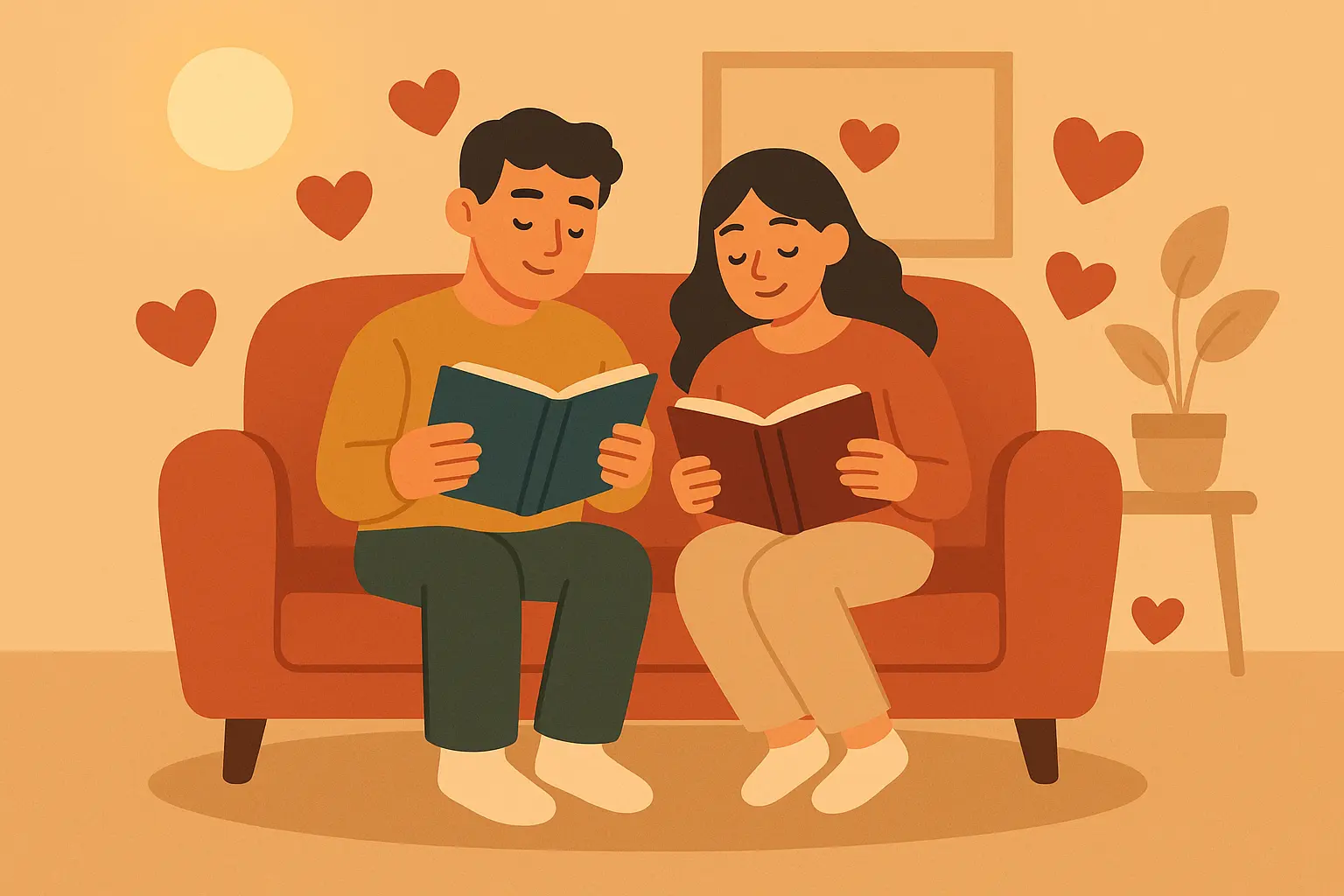
Table of Contents
-
Key Considerations When Choosing Romantic Love Stories
-
Contemporary Romance Stories (5 Stories)
-
Historical Romance Stories (4 Stories)
-
Fantasy Romance Stories (4 Stories)
-
Multicultural Romance Stories (4 Stories)
-
LGBTQ+ Romance Stories (4 Stories)
-
Unconventional Romance Stories (4 Stories)
-
Detailed Story Analysis and Examples
-
How to Apply Key Romance Elements to Any Story
-
Creating Your Own Romantic Love Stories with AI Tools
TL;DR
Here’s the deal: the best romance stories feel real, even when they’re about vampires or time travel. You want characters who have their own lives and problems beyond just finding love. Modern romance tackles stuff like dating apps and social media drama, while historical romance shows us that people have always been messy and complicated. Fantasy romance? It’s just regular relationship fears dressed up with magic. And honestly, the most memorable stories are the ones that make you ugly-cry because the characters actually earn their happy ending. Love stories from different cultures and LGBTQ+ perspectives show us that connection is universal, and sometimes the weirdest settings create the most beautiful romances. The secret sauce? Characters who feel like real people facing problems that actually make sense, not just drama for drama’s sake.
Key Considerations When Choosing Romantic Love Stories
Look, we’ve all been there – scrolling through book recommendations at midnight wondering if love is even real. Selecting romantic love stories that truly hit different requires understanding what makes relationships feel authentic and compelling. The most effective romantic narratives combine genuine emotional connections with well-developed characters who have their own motivations beyond finding love.
These love stories need problems that actually make sense (not just misunderstandings that could be solved with one honest conversation), cultural relevance that addresses contemporary issues, good pacing that doesn’t drag, and universal themes presented in fresh contexts. When these elements work together, they create stories that feel both timeless and immediately relevant to modern readers.
Exploring different [story theme examples](https://nairrate.com/blog/25-story-theme-examples-that-will-transform-your-writing-in-minutes/) can help you identify which romantic narratives align with your preferences and emotional needs.
|
What Makes Romance Work |
Why It Matters |
How You’ll Feel |
|---|---|---|
|
Real Feelings That Don’t Feel Fake |
Genuine emotions and believable relationship dynamics |
You’ll actually care about what happens |
|
Characters With Their Own Lives |
Fully realized people with personal growth |
You’ll be invested in their journey, not just their hookup |
|
Problems That Make Sense |
Natural obstacles from personality/circumstances |
You won’t want to shake the characters for being idiots |
|
Stories That Feel Current |
Addresses contemporary issues and diverse experiences |
You’ll see yourself reflected in the story |
|
Timeless Themes Done Fresh |
Universal concepts like trust and growth in new contexts |
You’ll get those “holy crap, this is so true” moments |
Real Feelings That Don’t Feel Fake
Readers can instantly detect when romantic chemistry feels forced or superficial. Trust me, we’ve all read those books where you’re like “why are these people even together?” The stories that stay with us feature genuine emotional connections that explore vulnerability, personal growth, and real compatibility between characters. You want love stories where the emotional journey feels earned rather than convenient.
Characters Who Actually Have Lives Beyond Romance
The strongest romantic narratives require fully realized characters with distinct personalities, personal flaws, and individual growth arcs. Each person should have their own fears, dreams, and motivations that exist independently of the romantic plot.
When characters change and improve through their relationship, the romance becomes more meaningful. I’ve noticed that my favorite romance novels always feature protagonists who could carry their own stories even without the romantic element. Nobody wants to read about people whose entire personality is “looking for love.”
Problems That Actually Make Sense
Effective romantic stories need obstacles that arise naturally from the characters’ personalities and circumstances. The best conflicts test relationships in ways that feel authentic rather than manufactured for drama. Look, we’ve all rolled our eyes at the “this could be solved with one conversation” trope. Resolution should demonstrate how couples overcome challenges together, making their bond stronger.
Stories That Feel Like They Get Modern Life
Modern romantic love stories must address current social dynamics, technology’s impact on relationships, and diverse cultural experiences. Stories that tackle contemporary challenges while maintaining universal appeal create deeper connections with today’s readers. Can we talk about how dating apps have completely changed the game?
Good Pacing That Doesn’t Drag
Whether following traditional romantic story patterns or experimental formats, the pacing should keep you turning pages while allowing proper emotional development. The story should feel intentional and satisfying from beginning to end. You know those books where you’re like “get to the point already”? Yeah, we’re avoiding those.
Timeless Themes in Fresh Packaging
The most memorable romantic stories explore concepts we all understand – trust, sacrifice, forgiveness, and personal growth – while presenting them through contemporary or unique situations. This combination of familiar emotions and fresh perspectives keeps love stories feeling both relatable and surprising.
Contemporary Romance Stories
Contemporary romance stories tackle the unique challenges of modern love, from navigating digital relationships to balancing career ambitions with personal connections. These five love stories explore how technology shapes romance, how professional rivalry can transform into partnership, how unexpected living situations create deep bonds, how shared healing experiences foster love, and how disconnecting from digital distractions can strengthen authentic intimacy.
Each story reflects real issues that modern couples face while providing hopeful examples of how love adapts to contemporary life. These love stories prove that romance can flourish even amid the complexities of our digital age.

1. The Digital Hearts Connection
Okay, this one’s wild – imagine finding out your dating app match is actually the person whose Instagram photos you’ve been low-key stalking for years, AND they’re the one leaving those thoughtful comments on your blog. Sarah, a graphic designer, and Marcus, a software developer, realize their digital footprints have been intertwining through Instagram follows, blog comments, and community forum discussions. Their first date becomes a journey of recognition as they uncover their shared digital history.
The story explores how modern relationships form layers of connection before people even meet, and how our online personas both reveal and conceal our true personalities. But here’s the twist – they discover their real-life personalities don’t perfectly match their curated online selves, forcing them to navigate authenticity in the digital age.
Sarah’s Discovery Moment: “Wait, you’re @StreetLensPhotography?” Sarah gasps, pulling out her phone to show Marcus her wallpaper – one of his street photography shots she’d saved months ago. “I’ve been following your work for two years. And you…” she scrolls through her blog comments, “you’re the person who always leaves those thoughtful design critiques signed ‘M.D.’ You helped me solve that logo problem for the coffee shop client!” This moment of recognition transforms their awkward first date into an excited archaeological dig through their digital past, revealing a foundation of compatibility they’d unknowingly built.
2. The Rival Entrepreneurs
Two competing small business owners on the same street initially clash over customers and space but gradually discover their shared passion for community development. Their professional rivalry transforms into collaboration as they realize their businesses complement rather than compete with each other.
This story examines how professional competition can mask deeper compatibility and shared values. The conflict centers on balancing individual business success with collaborative partnership, while the resolution shows how love can enhance rather than threaten professional ambitions. It’s got that enemies-to-lovers energy we all secretly love.
3. The Accidental Roommates
A housing mix-up forces two complete strangers to share an apartment, with their initial incompatibility slowly transforming into deep understanding. As they help each other through personal crises and career challenges, they discover that their differences actually complement each other perfectly.
The story explores how proximity and shared experiences can build unexpected intimacy. Conflicts arise from lifestyle differences and personal boundaries, while resolution comes through learning to appreciate rather than merely tolerate each other’s quirks. Warning: may cause you to reconsider your own living situation.
4. The Grief Counselors
Two therapists specializing in grief counseling meet at a professional conference and find healing from their own past losses through their growing relationship. Both have experienced significant personal tragedies that initially drew them to their profession, and their connection helps them process their own grief while supporting others.
This story addresses how shared professional purpose can create deep personal bonds and how helping others heal can facilitate our own healing. The main conflict involves learning to be vulnerable with someone who understands professional boundaries, while resolution shows how love can coexist with professional ethics. Fair warning: have tissues ready.
5. The Social Media Detox
A couple decides to disconnect from all social media for six months to focus on their relationship, rediscovering authentic communication and intimacy. They must navigate a world increasingly dependent on digital connection while learning to relate to each other without the constant influence of online validation and comparison.
The story examines how digital connectivity affects modern relationships and whether authentic intimacy requires disconnection from virtual networks. Conflict emerges from the challenges of maintaining relationships and professional connections without social media, while resolution demonstrates the value of prioritizing real-world connection. Honestly, this one might make you want to delete Instagram.
Historical Romance Stories
Historical romance stories transport readers to different eras while exploring timeless themes of love, sacrifice, and social change. These four love stories span from World War II codebreaking operations to Victorian medical practice, from Great Depression migration to Renaissance artistic patronage.
Each narrative uses historical settings to create authentic obstacles and social constraints that test romantic relationships, while demonstrating how love transcends the specific challenges of different time periods and social circumstances. Understanding effective [storytelling techniques](https://nairrate.com/blog/how-to-write-a-story-the-brain-science-behind-effective-storytelling/) becomes especially important when crafting historical romances that must balance period authenticity with emotional accessibility for modern readers.
These love stories prove that while social norms and technology change, the fundamental human need for connection remains constant across centuries.
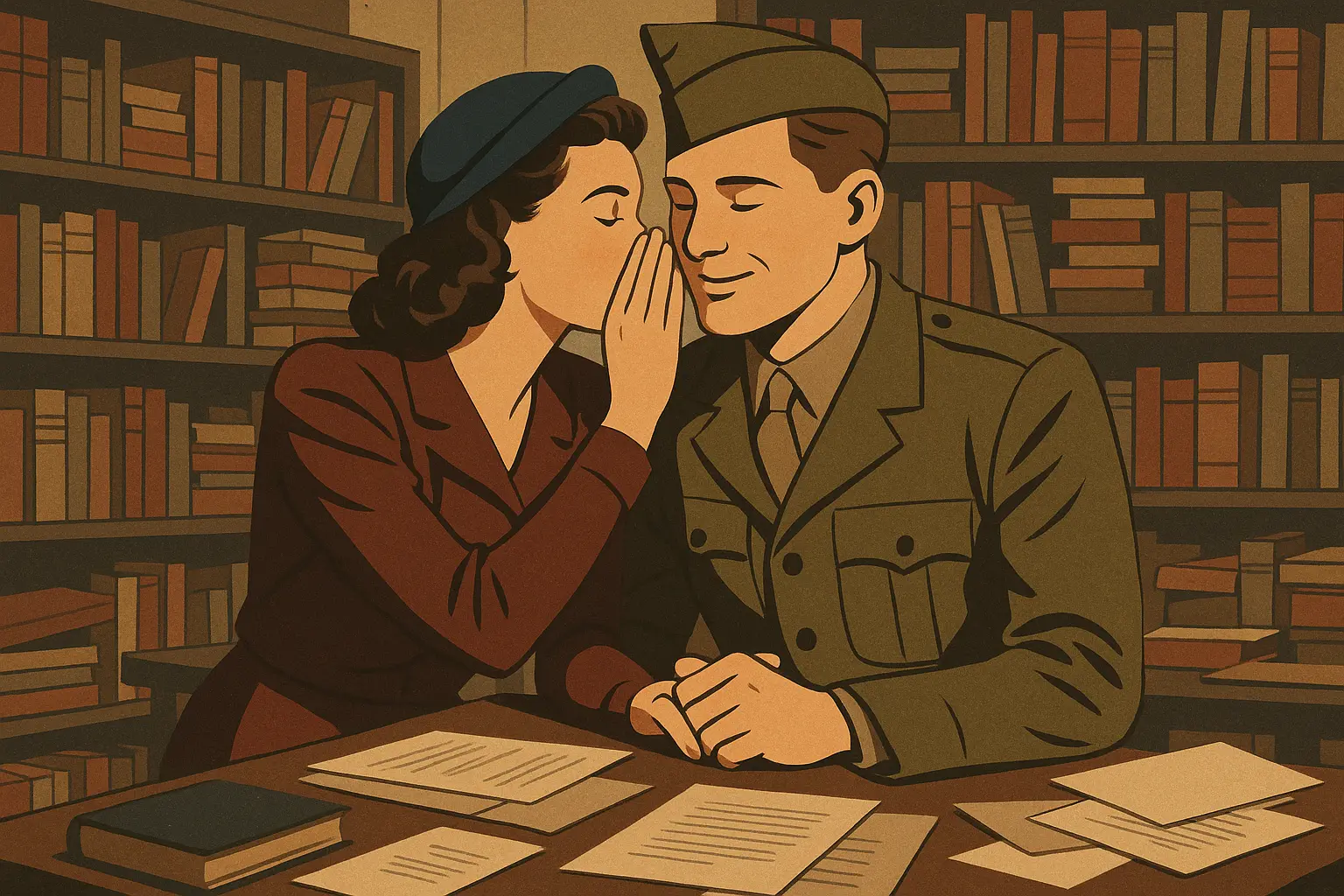
6. The WWII Codebreaker Romance
Picture this: Dr. Elizabeth Chen, a Chinese-American mathematician recruited for US codebreaking efforts, falls for Jean-Luc Dubois, a French resistance fighter providing intelligence. Their romance develops through encrypted messages and stolen moments between briefings, with their different languages creating unique courtship through mathematical equations and coded poetry.
The story explores themes of sacrifice, duty, and the price of secrecy during wartime. Their relationship faces constant threats of discovery, dangerous missions, and the possibility that neither might survive the war. The historical setting provides authentic obstacles while their intellectual connection transcends cultural and linguistic barriers. This one had me researching WWII codebreaking for hours.
7. The Victorian Era Medical Partnership
A progressive female doctor disguises herself as a man to practice medicine in 1880s London, finding love with a fellow physician who discovers her secret and becomes her ally in fighting for women’s medical rights. Their relationship must navigate the dangerous deception required for her to practice medicine while building genuine professional and personal partnership.
This story addresses gender equality issues through historical context while exploring how shared professional passion can strengthen romantic bonds. Conflict arises from the constant threat of discovery and social consequences, while resolution involves finding ways to support each other’s professional goals despite societal constraints. The tension will have you on the edge of your seat.
8. The Dust Bowl Migration
During the Great Depression, two families traveling west during the Dust Bowl form an unlikely alliance, with young members from each family finding love amid economic hardship and uncertain futures. Their romance develops as they face the challenges of migration, poverty, and family responsibility together.
The story examines how economic crisis and social upheaval affect personal relationships and how love can provide hope during desperate circumstances. Conflicts emerge from family obligations, economic pressures, and uncertain futures, while resolution shows how shared hardship can strengthen rather than weaken romantic bonds. Get ready for some serious emotional investment.
9. The Renaissance Artist’s Muse
In 15th century Florence, a talented but poor artist falls for a wealthy merchant’s daughter who secretly funds his work. Their love story unfolds against the backdrop of artistic patronage and rigid social class divisions, with their relationship challenging both family expectations and social norms.
This story explores how artistic passion and social class differences create both connection and conflict in romantic relationships. The main tension involves balancing artistic integrity with social expectations, while resolution addresses how love can bridge class differences through mutual respect and shared values. The art history details are absolutely gorgeous.
Fantasy Romance Stories
Fantasy romance stories use supernatural elements and magical settings to explore fundamental human emotions and relationship fears. These four love stories examine immortality and memory, dream connections and reality, elemental powers and prejudice, and time manipulation and repetition.
Each narrative uses fantastical premises to investigate real concerns about love, loss, identity, and the nature of authentic connection, proving that magical elements can enhance rather than overshadow genuine emotional storytelling. The supernatural aspects serve as metaphors for very real relationship challenges we all face.
These love stories demonstrate that whether we’re dealing with curses or everyday obstacles, the core elements of trust, vulnerability, and commitment remain essential for lasting love.
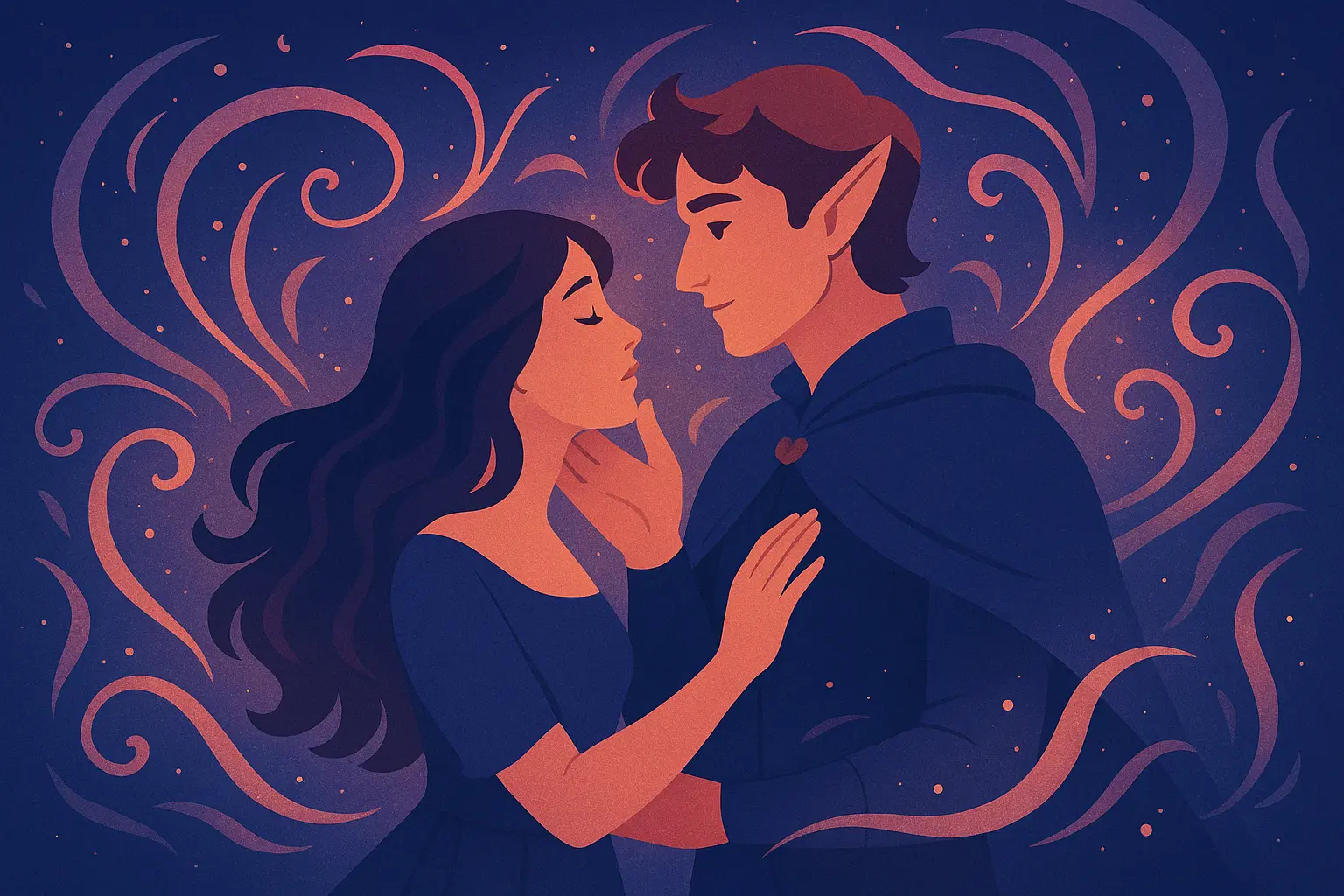
10. The Immortal’s Curse
Adrian has lived for over
Adrian has lived for over 2,000 years, cursed to forget everyone he loves after exactly 100 years of knowing them. After experiencing this heartbreak twenty times, he’s stopped forming deep connections. When he meets Luna, a historian researching ancient curses, their immediate and profound connection challenges his emotional isolation.
Luna discovers Adrian’s curse and becomes determined to break it, but the solution requires Adrian to risk his immortality and potentially lose all his memories, including those of Luna. The story examines whether perfect memory or perfect love is more valuable, and what sacrifices are worth making for authentic connection. This one broke my heart in the best way possible.
11. The Dreamwalker’s Dilemma
Someone with the ability to enter others’ dreams falls in love with a person they can only meet in the dream world. They struggle to find a way to connect in reality while protecting their beloved from the dangers that exist within dreams, including other dreamwalkers with malicious intentions.
This story explores the difference between fantasy and reality in relationships, and whether connections formed in artificial circumstances can translate to real-world love. Conflict arises from the limitations of dream-only interaction and external threats, while resolution involves finding ways to bridge the gap between dream and reality. The dream sequences are absolutely stunning.
12. The Elemental Academy
At a school for people with elemental powers, two students from traditionally opposing elements (fire and water) must overcome centuries of prejudice and their own conflicting abilities to be together. Their relationship challenges institutional traditions and family expectations while they learn to control powers that could literally destroy each other.
The story addresses prejudice, family traditions, and how differences can complement rather than conflict with each other. The main tension involves balancing personal desires with family loyalty and social expectations, while resolution shows how love can overcome even deeply ingrained cultural prejudices. Can we talk about how this trope never gets old?
13. The Time Loop Romance
Someone trapped in a time loop reliving the same day repeatedly falls for a stranger, but must figure out how to make them fall in love too before the loop resets. Each reset erases the stranger’s memory of their previous interactions, forcing the trapped person to find new ways to connect while trying to break the temporal prison.
This story examines authenticity in relationships and whether love can develop when only one person remembers shared experiences. Conflict emerges from the frustration of repeated failures and the ethical questions about manipulating someone’s emotions, while resolution involves finding genuine connection that transcends memory. Warning: you’ll want to throw your Kindle across the room (in a good way).
Multicultural Romance Stories
Multicultural romance stories celebrate diversity while exploring how love transcends cultural boundaries and language barriers. These four stories address cultural exchange and adaptation, arranged marriage traditions and personal choice, immigration challenges and community support, and interfaith relationships and family expectations.
Each narrative demonstrates how cultural differences can enrich rather than complicate romantic relationships, while acknowledging the real challenges that couples from different backgrounds face in building lasting partnerships. These love stories and cultural exchanges show us that love truly knows no borders.
The beauty of multicultural love stories lies in their ability to educate readers about different traditions while celebrating the universal nature of human connection.
|
What Makes Cross-Cultural Romance Work |
Real Challenges |
How Stories Handle It |
|---|---|---|
|
Language Mix-Ups |
Miscommunication, trying to express feelings in different languages |
Creative ways to communicate, lots of patience and laughter |
|
Family Drama |
Traditional vs. modern values clashing |
Compromise, helping families understand, gradual acceptance |
|
Religious Differences |
Different beliefs and practices creating tension |
Mutual respect, learning about each other’s faith |
|
Fitting In |
Community acceptance, adapting to new cultures |
Building bridges, finding what you have in common |
|
Identity Struggles |
Keeping your heritage while adapting to new places |
Celebrating both cultures without losing yourself |
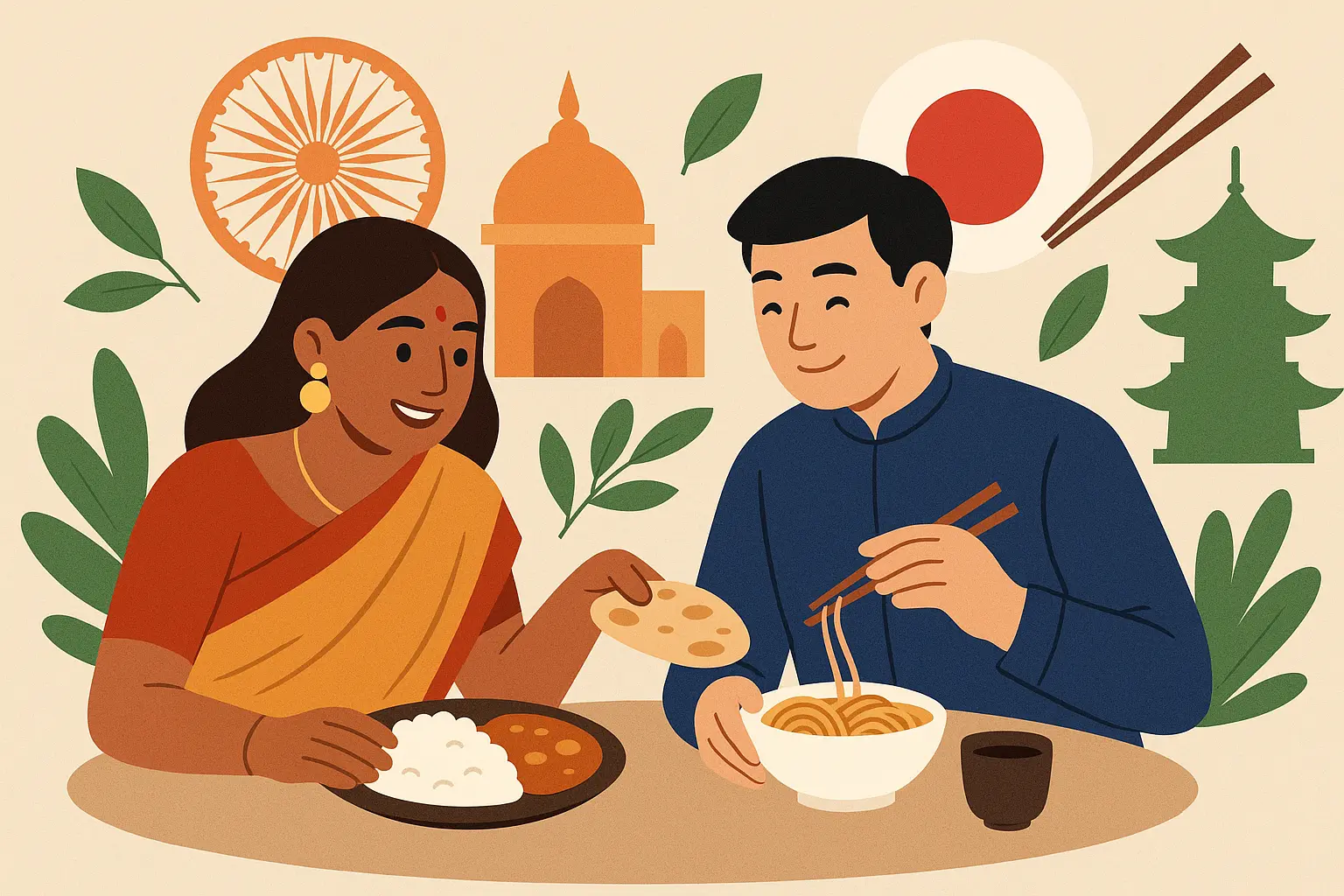
14. The Cultural Exchange
Emma, an American student studying Japanese literature in Tokyo, lives with the Tanaka family through a homestay program and develops feelings for Hiroshi, the family’s son who works as a translator. Their relationship begins through shared evening conversations about literature and cultural differences, requiring Emma to navigate Japanese family hierarchy and her role as both guest and potential romantic partner.
The story explores how love requires understanding a person’s entire cultural context. Conflicts arise from Emma’s American directness clashing with Japanese indirect communication, family expectations about relationships with foreign guests, and Emma’s temporary status in Japan. Trust me, the cultural learning curve is both hilarious and heartwarming.
15. The Arranged Marriage Evolution
Two people in an arranged marriage initially resist the union but gradually discover compatibility and genuine affection. They challenge traditional expectations while honoring their cultural heritage, learning to balance family obligations with personal desires and individual choice.
This story addresses the evolution of traditional practices in modern contexts and how arranged marriages can develop into love marriages. Conflict emerges from initial resistance and family pressure, while resolution involves finding ways to honor tradition while asserting personal agency in the relationship. It’s way more complex and beautiful than you’d expect.
16. The Immigration Love Story
A recent immigrant working multiple jobs to support their family meets a local community organizer, with their romance developing as they work together on immigration rights issues. They must overcome language barriers, cultural differences, and the stress of uncertain legal status while building their relationship.
The story examines how shared social justice work can create deep personal bonds and how love stories and activism can intersect to create meaningful change. Conflicts arise from legal challenges, family obligations, and cultural misunderstandings, while resolution shows how partnership can strengthen both personal and political goals. This one will make you believe in the power of community.
17. The Interfaith Journey
Two people from different religious backgrounds fall in love and must navigate family expectations, religious differences, and community pressures while finding ways to honor both their faiths and their relationship. They work to create a partnership that respects both traditions without compromising their individual beliefs.
This story explores how religious differences can be bridged through mutual respect and understanding. The main tension involves balancing personal faith with family expectations and community belonging, while resolution demonstrates how interfaith relationships can strengthen rather than weaken spiritual connections. The family dynamics are incredibly realistic.
LGBTQ+ Romance Stories
LGBTQ+ romance stories provide authentic representation while exploring themes of identity, acceptance, and love in all its forms. These four stories address late-life sexual orientation discovery, transgender identity and authentic love, military service and LGBTQ+ acceptance, and community activism and social change.
Each narrative offers positive representation that avoids harmful stereotypes while addressing real challenges that LGBTQ+ individuals face in finding and maintaining romantic relationships. These love stories celebrate the diversity of human experience while emphasizing that everyone deserves authentic connection.
The power of LGBTQ+ love stories lies in their ability to normalize diverse relationships while providing representation that many readers desperately need to see.
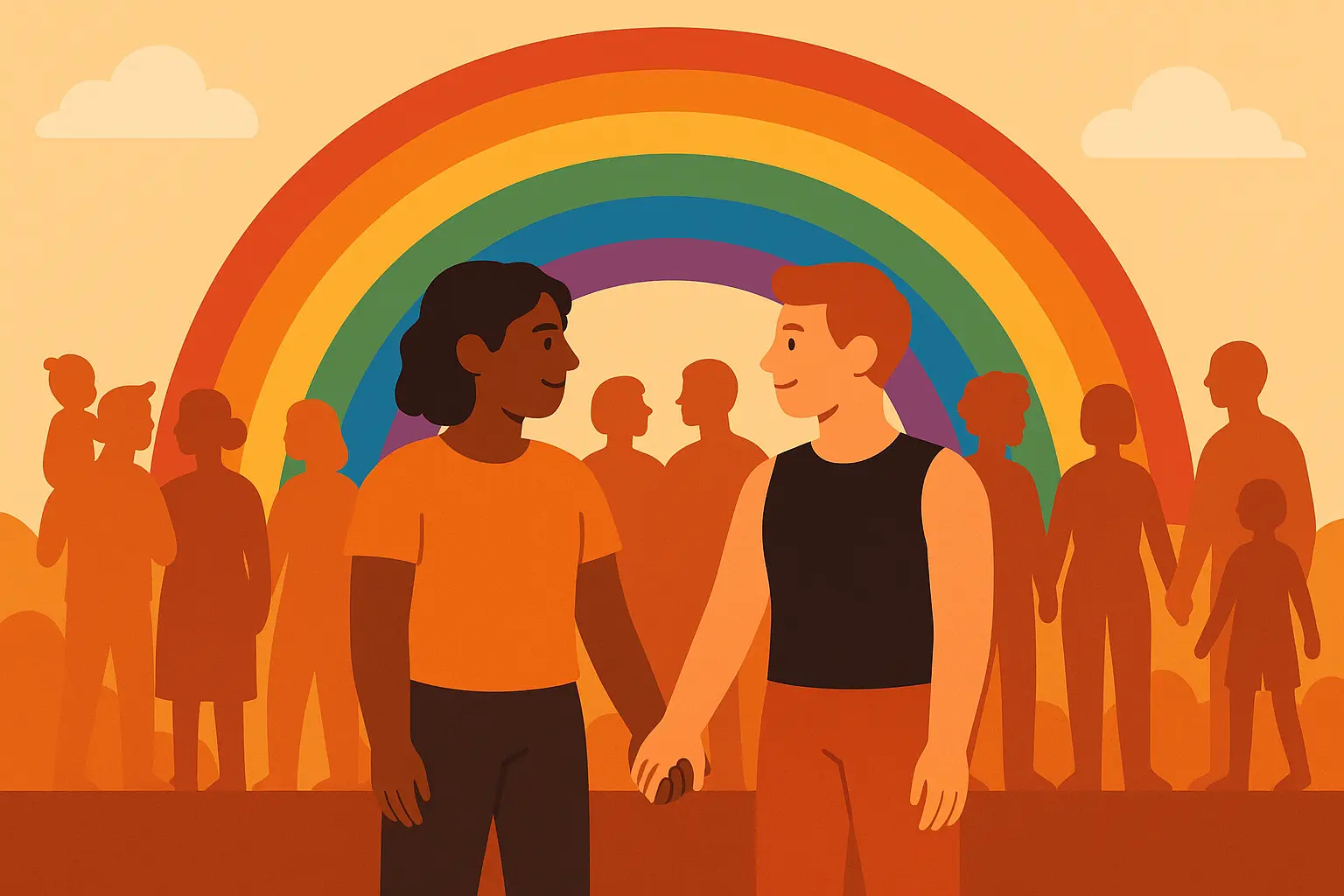
18. The Coming Out Later in Life
David, a 45-year-old divorced father of two teenagers, meets Alex, a bookstore owner, at a community book club. David has lived his entire adult life believing he was heterosexual, but his connection with Alex awakens feelings he’s never experienced, leading him to question his identity while navigating his children’s reactions and his own internalized assumptions.
Alex, who came out in college, becomes both romantic interest and guide, helping David understand that sexual orientation can be fluid and that discovering your true self at any age is valid. The story addresses the unique challenges of coming out later in life, including dealing with adult children and established social circles. It’s incredibly tender and realistic about the confusion and fear involved.
19. The Trans Love Story
A transgender person beginning their transition finds acceptance and love with someone who sees them for who they truly are. The story explores themes of identity, authenticity, and unconditional love while addressing the specific challenges that transgender individuals face in dating and relationships.
This story focuses on authentic representation and the importance of being seen and accepted for one’s true identity. Conflict arises from societal prejudice and internal fears about acceptance, while resolution demonstrates how genuine love transcends physical appearance and social expectations. The authenticity and respect in this portrayal is everything.
20. The Long-Distance Military Romance
Two service members in different branches of the military maintain a relationship across deployments, distance, and the challenges of military life while dealing with LGBTQ+ acceptance within military culture. Their relationship must survive physical separation and the stress of serving in an environment that hasn’t always been welcoming to LGBTQ+ service members.
The story examines how military service affects relationships and how LGBTQ+ service members navigate both professional and personal challenges. Conflicts emerge from deployment separations, military culture, and career pressures, while resolution shows how strong partnerships can survive external challenges. The military details are spot-on accurate.
21. The Small Town Pride
In a conservative small town, two people fall in love while organizing the community’s first Pride event. They face local resistance but find unexpected allies as they work to create positive change in their community, discovering that love can be a catalyst for broader social transformation.
This story explores how activism and social change work can strengthen romantic relationships and how love can inspire community engagement. The main tension involves balancing personal safety with public activism, while resolution demonstrates how authentic love can create ripple effects of acceptance and understanding in unexpected places. You’ll be cheering by the end.
Unconventional Romance Stories
Unconventional romance stories break traditional romantic formulas by placing love in unexpected settings and circumstances. These four stories explore reality TV competition and authentic connection, shared business inheritance and partnership, witness protection and identity deception, and post-apocalyptic survival and emotional intimacy.
Each narrative proves that love can flourish in the most unlikely situations while creating fresh takes on familiar romantic themes and relationship dynamics. These love stories challenge our assumptions about where and how romance can develop.
The appeal of unconventional love stories comes from their ability to surprise us while still delivering the emotional satisfaction we crave from romantic fiction.
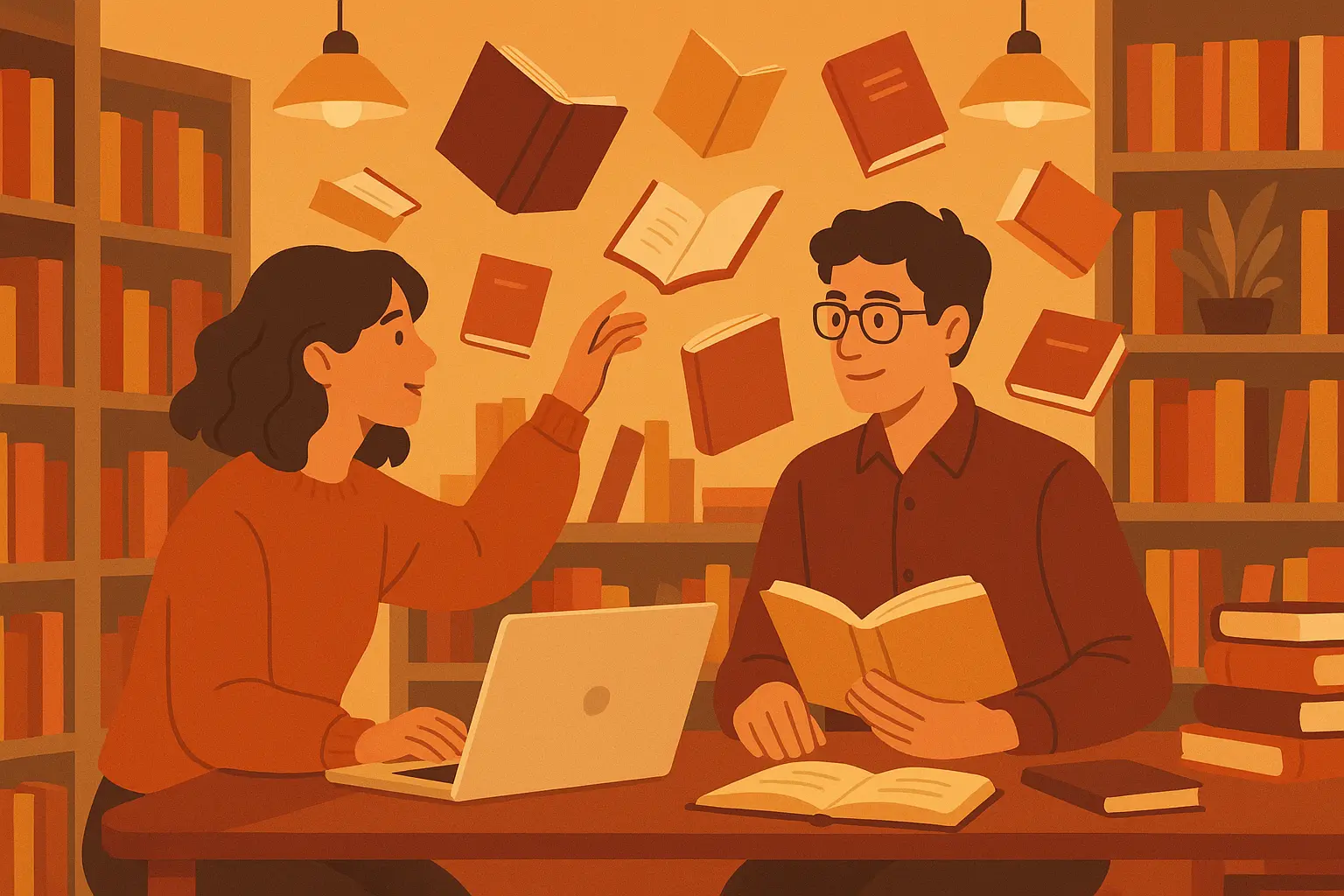
22. The Competitive Reality Show
Two contestants on a survival reality show initially compete against each other but gradually form an alliance that becomes romantic. Their relationship develops under constant camera surveillance and competitive pressure, with their connection tested by the artificial environment, strategic gameplay, and the transition back to normal life after filming ends.
The story examines authenticity in artificial environments and whether relationships formed under extreme circumstances can survive in everyday reality. Conflicts arise from competition rules, public scrutiny, and the question of whether their feelings are genuine or strategically motivated. The behind-the-scenes reality TV details are fascinating.
23. The Bookstore Inheritance
When two strangers inherit a failing bookstore together from a mutual friend they never knew they shared, they must work together to save the business while discovering their connection runs deeper than expected. Their partnership evolves from purely practical to deeply personal as they uncover their shared friend’s intentions and their own compatibility.
This story explores how shared purpose and responsibility can create romantic bonds and how working toward common goals strengthens relationships. The main tension involves balancing business decisions with personal feelings, while resolution shows how professional partnership can enhance rather than complicate romantic connection. Okay, I might be slightly obsessed with this one.
24. The Witness Protection Romance
Maya, living under the assumed identity “Claire,” has been in witness protection for three years after testifying against organized crime figures. When Jake, a local veterinarian, begins showing genuine interest in her, Maya faces an impossible choice between the safety of isolation and the risk of human connection.
The story explores themes of identity, truth, and whether love can exist built on necessary deceptions. Maya must decide whether to reveal her true identity, knowing it could endanger both their lives, or continue living a lie that prevents genuine intimacy. Tension builds as Maya’s past begins to catch up with her. The suspense will keep you up way too late.
25. The Apocalypse Survival Partnership
In a post-apocalyptic world, two survivors from different backgrounds must rely on each other for survival, with their practical partnership evolving into emotional intimacy amid the challenges of rebuilding civilization. Their relationship develops as they face external threats while learning to trust each other completely.
This story examines how extreme circumstances can accelerate emotional intimacy and how shared survival experiences create unbreakable bonds. Conflicts arise from resource scarcity, external dangers, and the psychological stress of their situation, while resolution shows how love can provide hope even in the darkest circumstances. This one restored my faith in humanity.
Detailed Story Analysis and Examples
Understanding what makes romantic stories truly compelling requires examining specific examples in depth. By analyzing how successful narratives handle emotional authenticity, character development, and conflict resolution, we can identify the techniques that create lasting impact.
These detailed breakdowns reveal how different genres approach romance while maintaining universal appeal, and how specific story elements work together to create memorable reading experiences that resonate with diverse audiences. Learning from [short story examples](https://nairrate.com/blog/25-short-story-examples-that-will-transform-your-understanding-of-great-fiction/) can provide valuable insights into how successful authors craft compelling romantic narratives within limited word counts.
Some romantic love stories succeed because they master the delicate balance between familiar emotional beats and surprising character development.
Character Development Through Conflict: In “The WWII Codebreaker Romance,” Elizabeth’s mathematical precision initially clashes with Jean-Luc’s intuitive resistance tactics. When they’re assigned to work together on decrypting German communications, their different approaches create tension. Elizabeth wants systematic analysis while Jean-Luc pushes for quick, risky interpretations based on field intelligence. Their breakthrough comes when Elizabeth realizes her equations need Jean-Luc’s contextual knowledge, and he discovers her methodical approach prevents dangerous assumptions. This professional growth mirrors their personal relationship – learning to value each other’s strengths rather than seeing differences as obstacles.
Contemporary Romance Deep Dive: The Digital Hearts Connection
Can we talk about how brilliant this setup is? Sarah follows Marcus’s photography Instagram without knowing his name, while Marcus regularly reads Sarah’s design blog and comments thoughtfully on her posts. They’ve both participated in discussions on their neighborhood’s community forum, often agreeing with each other’s viewpoints about local issues. When they match on a dating app three years later, their first coffee date becomes a revelation.
“Wait, you’re @StreetLensPhotography?” Sarah asks, recognizing one of his photos as her phone wallpaper. The conversation shifts from typical first-date small talk to excited recognition of their digital history. They spend hours connecting their online interactions, realizing they’ve been building compatibility without knowing it.
But here’s where it gets interesting – they discover their curated online personas don’t perfectly match reality. Sarah’s confident design blog voice contrasts with her social anxiety, while Marcus’s adventurous photography suggests spontaneity that doesn’t match his actually pretty methodical personality. They must learn to love each other’s authentic selves rather than their digital
But here’s where it gets interesting – they discover their curated online personas don’t perfectly match reality. Sarah’s confident design blog voice contrasts with her social anxiety, while Marcus’s adventurous photography suggests spontaneity that doesn’t match his actually pretty methodical personality. They must learn to love each other’s authentic selves rather than their digital projections.
Historical Romance Analysis: The WWII Codebreaker Romance
Dr. Elizabeth Chen works in a classified facility where personal relationships are discouraged and cultural barriers run deep. When Jean-Luc arrives with crucial intelligence, their initial professional interactions gradually become personal through shared intellectual challenges and the intensity of wartime pressure.
Their courtship develops through mathematical puzzles left on each other’s desks and conversations conducted in multiple languages to avoid detection. Elizabeth writes equations that express emotional concepts, while Jean-Luc responds with coded poetry that only she can decipher. Their relationship exists in the spaces between official duties and surveillance.
The story’s power comes from historically accurate constraints that create genuine obstacles. Their love must survive the war, the secrecy required by their work, the cultural prejudices of the 1940s, and the constant possibility that one or both might not survive their dangerous assignments. The research that went into this is incredible.
Fantasy Romance Examination: The Immortal’s Curse
Adrian’s curse forces him to forget everyone he loves after exactly 100 years, creating a unique exploration of memory’s role in love. When he meets Luna, he’s initially resistant to connection, knowing the inevitable heartbreak that awaits. Luna’s research into ancient curses gives her knowledge that Adrian lacks about his own condition.
The fantasy element serves the emotional story rather than overwhelming it. Adrian’s immortality allows exploration of what makes love eternal – is it memory, feeling, or something deeper? Luna’s determination to break the curse raises questions about whether love is worth ultimate sacrifice, including the risk of losing everything.
The resolution requires both characters to choose between safety and love. Adrian must decide whether to risk his immortality and memories for the possibility of breaking the curse, while Luna must accept that her solution might erase their entire relationship from Adrian’s mind. The emotional stakes are devastating.
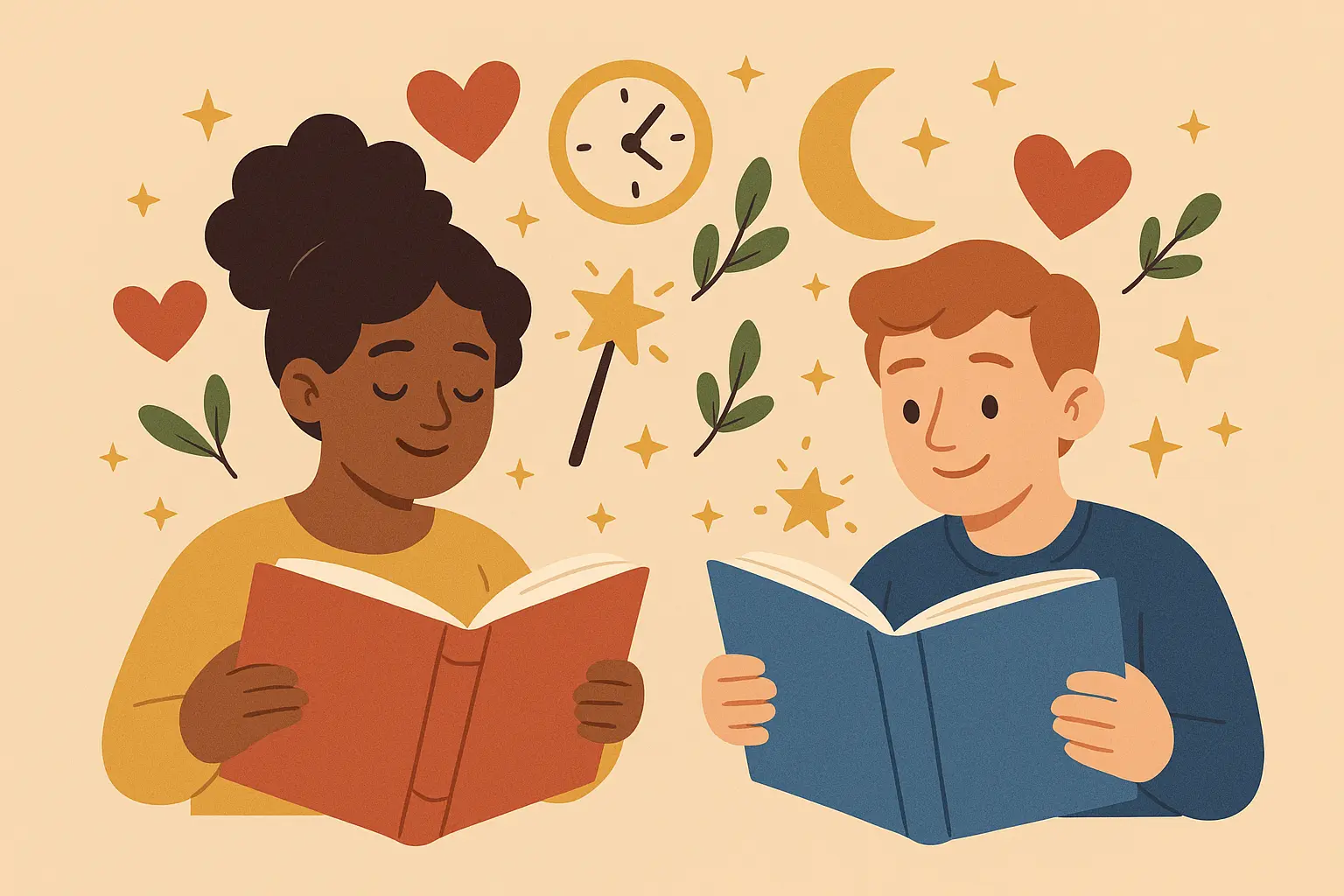
How to Apply Key Romance Elements to Any Story
Creating compelling romantic stories requires understanding how fundamental elements work together to create emotional resonance. Whether you’re writing contemporary, historical, fantasy, or any other type of romance, certain principles remain constant: authentic emotional connections, meaningful character development, organic conflict, and satisfying resolution.
By mastering these core elements and adapting them to different settings and circumstances, writers can create romantic narratives that feel both fresh and timeless. Mastering [first-person narrative techniques](https://nairrate.com/blog/25-first-person-story-examples-that-will-transform-your-writing-forever/) can add intimacy and emotional depth to romantic stories by allowing readers direct access to characters’ internal emotional journeys.
The best love stories succeed because they understand that romance is fundamentally about two people becoming better versions of themselves through their connection.
|
Romance Writing Must-Haves |
How to Do It Right |
What Not to Do |
|---|---|---|
|
Characters With Their Own Lives |
Give them goals, flaws, growth that exist beyond romance |
Don’t make them exist only to find love |
|
Real Feelings |
Show vulnerability gradually, keep reactions consistent |
Avoid forced drama or characters acting out of character |
|
Problems That Make Sense |
Natural obstacles from personality/circumstances |
Skip the misunderstandings that one conversation could fix |
|
Earned Happy Endings |
Show character growth, make outcomes feel deserved |
Don’t solve everything with convenient coincidences |
|
Universal Themes |
Timeless concepts in fresh contexts |
Avoid overused tropes without adding something new |
Building Real Feelings That Don’t Feel Fake
Real emotional authenticity starts with understanding your characters’ internal lives beyond their romantic desires. Each person should have fears, dreams, and motivations that exist independently of the love story. When characters feel complete as individuals, their romantic connection becomes more believable and compelling.
Create emotional authenticity by showing vulnerability gradually rather than through dramatic revelations. Small moments of honesty often carry more weight than grand gestures. Characters should react to emotional situations in ways that feel consistent with their established personalities while allowing room for growth and change.
Showing Vulnerability Through Small Moments: Instead of having Sarah dramatically confess her social anxiety in a tearful scene, show it through smaller, authentic details. She orders the same coffee drink every time to avoid decision-making pressure. She rehearses casual conversations in her head before social events. When Marcus notices she always lets him choose restaurants and gently asks if she has preferences, her quiet admission that “choosing feels overwhelming sometimes” carries more emotional weight than a grand revelation. These authentic moments build trust between characters and readers.
Developing Characters Who Actually Have Lives
Look, nobody wants to read about people whose entire personality is “looking for love.” Strong romantic characters have goals, careers, friendships, and personal challenges that don’t revolve around finding romance. Their individual character arcs should intersect with but not depend entirely on the romantic plot. When characters grow and change through their relationship, that development should feel natural rather than forced.
Give each character distinct voices, backgrounds, and perspectives that create both attraction and potential conflict. The most interesting romantic relationships involve people who complement each other’s strengths while challenging each other’s weaknesses in constructive ways.
Creating Problems That Actually Make Sense
The best romantic conflicts arise naturally from character personalities, circumstances, or external pressures rather than misunderstandings that could be resolved with simple communication. Look, we’ve all read those books where you want to shake the characters and yell “JUST TALK TO EACH OTHER!” Conflicts should test the relationship in meaningful ways while allowing both characters to demonstrate growth and commitment.
External obstacles work best when they force characters to make difficult choices about their priorities and values. Internal conflicts should stem from genuine character flaws or past experiences that require real work to overcome, rather than arbitrary personality quirks.
Crafting Satisfying Resolutions
Satisfying romantic resolutions show how characters have grown through their relationship and overcome the specific obstacles that created conflict. The resolution should feel earned rather than convenient, demonstrating that the couple has developed the tools and understanding necessary for a lasting partnership.
Avoid resolving conflicts through external circumstances or sudden character changes that haven’t been properly developed. The best endings show how the characters’ love has made them better individuals while suggesting a hopeful future together.
Creating Your Own Romantic Love Stories with AI Tools
Let’s be real – sometimes you’re staring at a blank page thinking “how the hell do people write kissing scenes without dying of embarrassment?” Modern writers have access to powerful AI tools that can enhance the creative process of crafting romantic stories. From generating compelling opening lines to developing complex character relationships, AI assistance can help overcome common writing challenges while maintaining the authentic emotional core that makes romance compelling.
Understanding how to effectively collaborate with AI tools can accelerate the writing process while preserving the human creativity that readers connect with most deeply. Nairrate’s [love story generator](https://nairrate.com/tools/love-story-generator/) can help spark initial ideas and plot concepts when you’re looking to create your own romantic narratives with unique twists and compelling characters.

Overcoming Common Romance Writing Challenges
Many writers struggle with specific elements of romantic storytelling that can benefit from AI assistance. Finding the perfect opening line that immediately establishes chemistry between characters often stumps even experienced authors. Developing authentic dialogue that reveals emotional depth without feeling forced requires careful balance between natural speech patterns and narrative purpose.
Creating those pivotal moments where relationships transform – the first kiss, the major conflict, the emotional breakthrough – demands precise timing and emotional authenticity. Writers frequently face creative blocks when trying to avoid overused tropes while still delivering the emotional satisfaction that romance readers expect.
AI-Powered Story Development
The Story Starters Generator provides compelling first lines specifically tailored for romance, helping writers begin their love stories with openings that immediately establish emotional connection and romantic tension. The tool understands genre-specific cues and can generate starters that perfectly set the tone for different types of romantic narratives.
When facing writer’s block or seeking fresh perspectives on character development, plot twists, or emotional beats, AI provides alternative approaches that might not occur naturally. This collaborative partnership proves particularly valuable in romance writing, where avoiding clichés while honoring genre expectations requires creative balance.
Whether you’re exploring established romantic tropes or crafting completely unique love stories, AI assistance can help transform initial ideas into compelling narratives that capture the magic of authentic human connection. Not to write your story for you, but to give you that little push when you’re stuck on how to make your characters meet or what they should fight about that isn’t just a stupid misunderstanding.
Ready to create your own unforgettable romantic love story? Discover how Nairrate’s AI-powered tools can help you craft compelling romantic narratives that resonate with readers and capture the complexity of modern love in all its forms.
Final Thoughts
Here’s the thing about romance stories – they’re not just fluffy escapism (though there’s nothing wrong with fluffy escapism). The really good ones remind us that connection is possible, even when everything feels impossible. Romance stories continue evolving to reflect our changing world while maintaining the timeless appeal of authentic human connection. The 25 stories explored here demonstrate that love transcends genres, time periods, and circumstances when writers focus on genuine emotional authenticity and meaningful character development.
Whether you’re drawn to contemporary tales that mirror modern dating challenges, historical romances that explore love across different eras, or fantasy stories that use magical elements to examine real emotions, the key lies in creating characters who feel like real people facing genuine obstacles. The most memorable romantic stories show us not just how people fall in love, but how love changes them for the better.
These diverse narratives prove that there’s no single formula for compelling romance – only the consistent need for authentic emotions, well-developed characters, and conflicts that test relationships in meaningful ways. As you explore these stories or create your own, remember that the best romantic fiction helps us understand both the challenges and the incredible rewards of human connection.
And honestly? Sometimes reading about fictional people getting their happy endings is exactly what we need to believe our own happy ending is out there somewhere. Trust me on this one.



Add comment